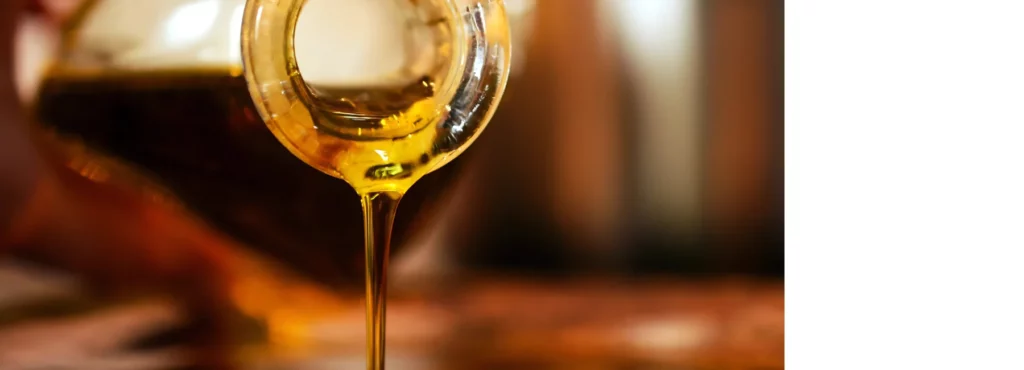Exploring Artboard Oil Paints
Introduction to Artboard Oil Paints
Artboard Oil Paints, the pride of South Africa, are every artist’s wish come true. These spectacular paints boast a smooth, buttery texture that’s a delight to apply, offering vibrant colours that can make even the dreariest of canvases sing (My Art Shop). With a range of 44 fabulous hues packed in handy 40ml tubes, Artboard Oil Paints ensure you have just the right colour for every stroke of your masterpiece (My Art Shop).
The extended drying time of these paints offers artists the flexibility to ponder, blend, and rework their compositions. This ensures every brushstroke gets the attention it deserves and, perhaps, avoids those frantic “Oh-no-I’ve-messed-up” moments.
Craftsmanship of Artboard Oil Paints
Each tube of Artboard Oil Paint is like a mini-miracle of modern artistry. The pigments are ground so finely and mixed into the binders with such precision that the resulting paint feels like silk and spreads like butter on toast. For any artist looking to achieve the rich, luscious look of oil paintings, Artboard Oil Paints are the way to go.
Whether you’re invoking the spirit of Peter Paul Rubens and his technique of juxtaposing light colors against shadows (Britannica), or merely experimenting with your own unique style, Artboard Oil Paints provide the quality and consistency you need.
Using Artboard Oil Paints also means investing in a product that continually supports your creative journey. With such exceptional handling and finish, these paints make every stroke a stroke of genius. Whether you’re just starting out or are a seasoned pro, Artboard Oil Paints deliver an outstanding artistic experience.
Benefits of Artboard Oil Paints
Vibrant Colour Palette
If there’s one thing an artist craves, it’s a paint that makes their colours pop like a firework show on New Year’s Eve. Artboard Oil Paints, lovingly crafted in South Africa, provide this in spades. Thanks to their triple-milling process, these paints have an incredibly rich pigment load, thus ensuring that every stroke bursts with vibrant colour (My Art Shop).
What’s more, with a selection of 44 colours in handy 40ml tubes, you’ll never find yourself wishing for more variety. From the most radiant reds to the deepest blues, the pure, buttery consistency of these paints allows you to mix and match to your heart’s content, thus achieving precisely the shade you need.
| Feature | Artboard Oil Paints |
|---|---|
| Colour Options | 44 Colours |
| Tube Size | 40ml |
| Pigment | Rich and Vibrant |
| Milling Process | Triple-Milled |
No more muted hues or settling for less-than-brilliant colours. Artboard Oil Paints make your art sing!
Extended Drying Time
Let’s face it—art should never be a race. Sometimes, the masterpiece you’re working on demands time, patience, and maybe a cup of tea in between. That’s where the extended drying time of Artboard Oil Paints comes into play. Because these high-quality oils don’t dry out quicker than you can say “Bob Ross,” they provide you with the luxurious luxury of blending and re-working your paint until it’s just right (My Art Shop).
For perfectionists, detail-lovers, and anyone who likes to take their time to make sure every brushstroke is flawless, Artboard’s extended drying time is an absolute blessing. Even better, this feature allows for techniques like wet-on-wet painting, therefore making these oil paints extraordinarily versatile.
By using these paints, you can focus on your creative process without worrying about your paint drying out faster than you can say “Picasso.”
Understanding Oil Paint Composition
Oil paints are like a beautiful symphony of ingredients coming together to create works of art. Understanding what goes into your Artboard Oil Paints can help you master their use and therefore achieve stunning results.

Pigments and Binders
At the heart of every oil paint is its pigment and binder. Pigments give paint its vibrant hue, while binders hold everything together, ensuring your masterpiece doesn’t dissolve into a colourful puddle.
Pigments
Pigments are the colourful materials used in oil paints. They can be natural, like minerals and earth pigments, or synthetic. Each pigment can be identified by its Colour Index Name. For example, vermilion red is labelled as PR106 (Permanent Red 106 – mercuric sulfide). These pigments can vary significantly in terms of their lightfastness, tinting strength, and price.
Binders
The binder is what keeps the pigment particles in suspension and allows the paint to adhere to your canvas. Manufacturers use different binders for oil paints, with alkali-refined linseed oil being the most common. In the fascinating world of binders, each type presents its own quirks and benefits:
- Linseed Oil: The most commonly used binder, providing a longer drying time and a strong, flexible film.
- Walnut Oil: Often hailed as the best all-around binder, because it produces a glossy finish and resists yellowing.
- Poppy Oil: Ideal for whites and light colours, but it’s the priciest of the lot.
- Safflower Oil: The cheapest option, commonly used for whites and pale colours to reduce yellowing.
Most important, it’s worth noting that manufacturers might use different binders for different colours within the same brand (Thomas Hudson Studio Journal).
Additives in Oil Paints
Additives are the secret ingredients tucked away in oil paints, playing a subtle yet significant role. These extra components can enhance or alter the characteristics of the paint, and not all additives are created equal.
Extenders
Extenders are added to extend the shelf life of the paint and prevent it from drying out inside the tube. These can often be a point of contention, as some believe the presence of extenders signals lower quality paint.
Additional Additives
Additional additives can include stabilizers, driers, and fillers:
- Stabilizers: Prevent pigments from settling.
- Driers: Accelerate the drying process.
- Fillers: Bulk up the paint, therefore affecting texture and opacity.
Differentiating high-quality paint from lesser-quality options often comes down to the number of additives. Because more additives can imply lower quality.
| Additive Type | Function |
|---|---|
| Extenders | Extend shelf life |
| Stabilizers | Prevent pigment settlement |
| Driers | Speed up drying time |
| Fillers | Affect texture and opacity |
By understanding the pigments and binders in your Artboard Oil Paints, as well as the role of various additives, you can make informed choices to elevate your artwork. Whether you aim to achieve a masterful impasto effect or a delicate glaze, knowing what’s in your paint can make all the difference.
Tips for Working with Oil Paints
When it comes to using Artboard Oil Paints, there are a few essential tips and tricks that every artist should know. From mastering the “Fat Over Lean” rule to understanding the interchangeability of oil paint brands, these insights will help you elevate your artwork.
The “Fat Over Lean” Rule
The “Fat Over Lean” rule is crucial when working with oil paints. But what does it mean? Essentially, it means that each layer of paint should contain more oil than the one beneath it. This principle is derived from how oil paint reacts with the air, leading to a gradual process known as oxidization (My Art Shop). Unlike other paint types that dry through evaporation, oil paints solidify through oxidization, and following the “Fat Over Lean” rule prevents cracking in your masterpiece.
What Does This Look Like in Practice?
- Thinner Base Layers: Start with thin, solvent-thinned paint layers.
- Thicker Top Layers: Gradually increase the oil content in subsequent layers.
- Monitor Your Mixtures: Keep an eye on the ratios of oil to solvent.
To illustrate here’s a simple table to guide you through the stages:
| Layer | Oil Content | Solvent Content |
|---|---|---|
| Base | Low | High |
| Middle | Moderate | Moderate |
| Top | High | Low |
This layering technique ensures that the paint adheres well and flexes with the canvas, thus avoiding cracks and providing a durable finish.
Interchangeability of Oil Paint Brands
One of the perks of using oil paints is that brands are often interchangeable. Yes, you read that right! You can mix different brands of oil paints without worrying about chemical reactions or colour discrepancies (My Art Shop).
Why Is This Exciting?
- Flexibility: If you adore the vibrant reds from Brand A and the deep blues from Brand B, you can mix them for a custom palette.
- Cost-Effective: Mix and match to make the most of what you have. No need to stick to a single brand.
- Experimentation: Unlock new creative possibilities by combining various brands and exploring their unique textures and finishes.
By understanding and applying these essential tips, artists can better control the properties of their Artboard Oil Paints and achieve professional results. Whether you’re just starting with oil paints or are looking to refine your technique, these insights will help you make the most of your creative journey.


